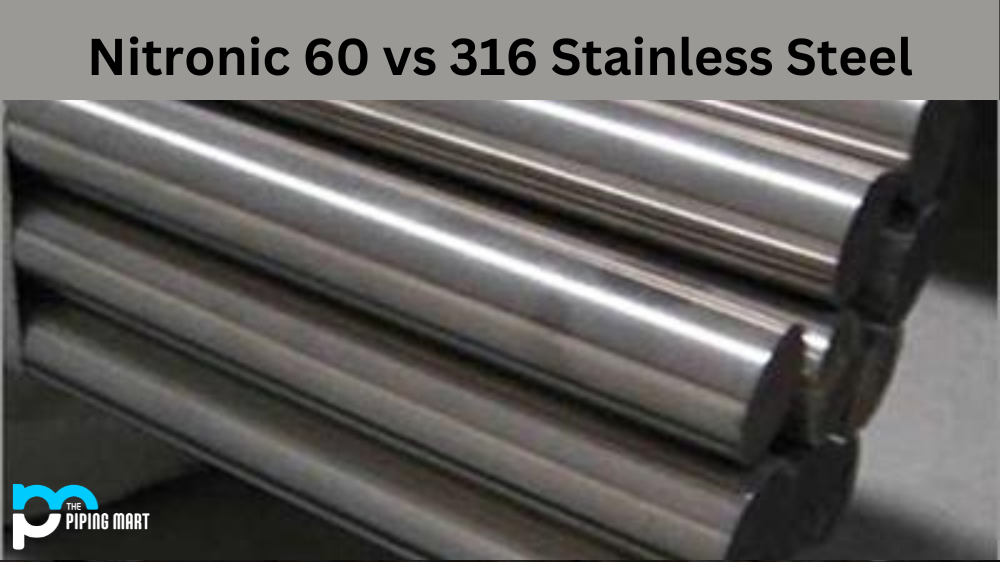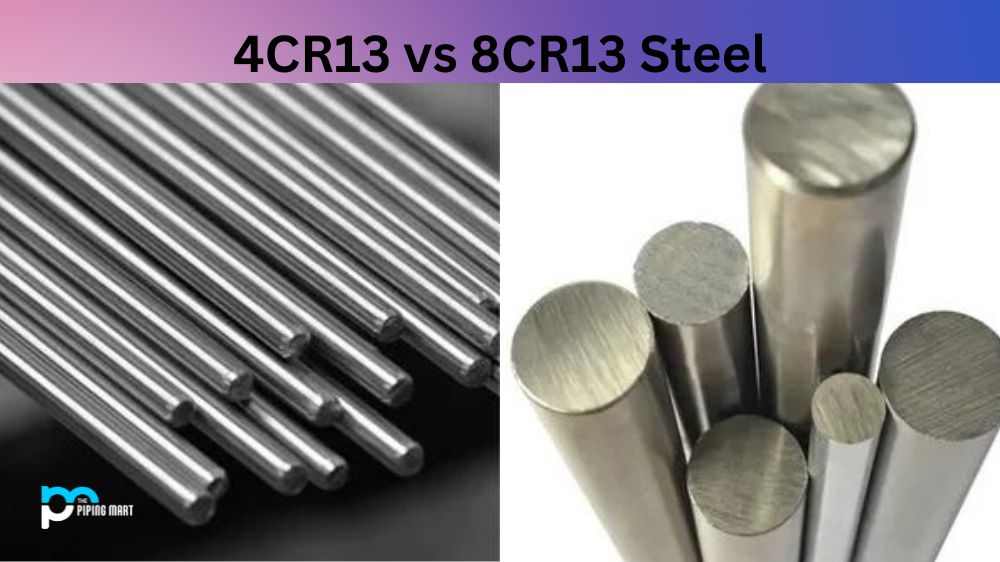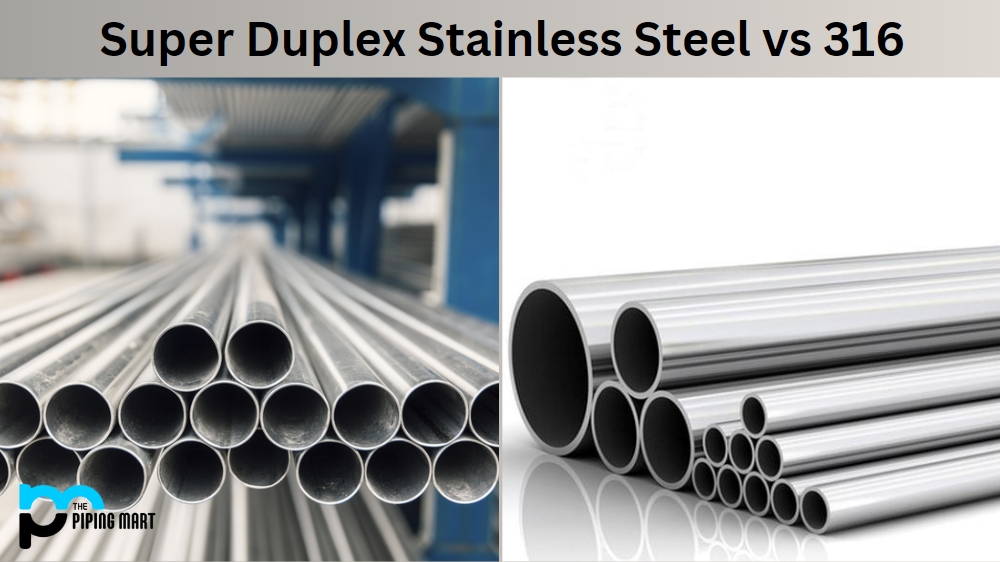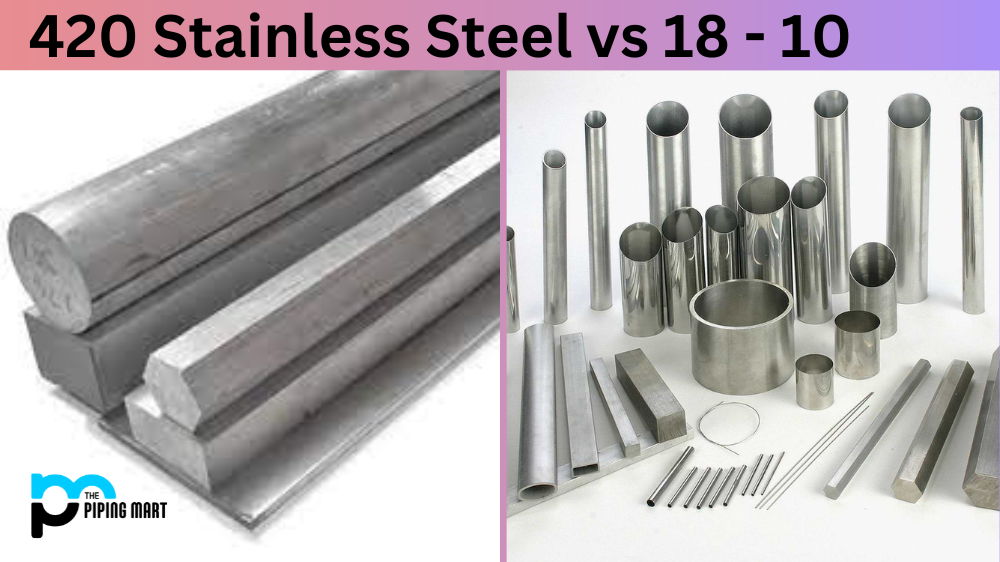When selecting the correct type of stainless steel for your project, the most popular options available are nitronic 60 and 316. Both types of stainless steel offer excellent corrosion resistance and durability, but some key differences must be considered. Let’s take a look at what sets these materials apart from one another and how they can be used in suitable applications.
Difference between nitronic 60 and 316 stainless steel
Nitronic 60 comprises iron and chromium, while 316 contains iron, chromium, nickel, molybdenum, and other trace elements. This combination makes nitronic 60 a more economical option than 316 since it requires fewer raw materials. Additionally, nitronic 60 has a higher yield strength than 316, which allows it to resist wear better and tear over time. However, this added strength also means that nitronic 60 is more susceptible to stress corrosion cracking when exposed to specific environments such as chemical processing plants or marine environments with high levels of salt water exposure.
On the other hand, 316 stainless steel is more resistant to stress corrosion cracking due to its higher nickel content which provides additional protection against these types of corrosive environments. Furthermore, 316 offers better formability than nitronic 60, making it easier to shape into complex parts or components without compromising its strength or durability. While this added flexibility does come at the cost of slightly lower yield strength compared to nitronic 60, it is still capable of withstanding heavy loads in many applications where other materials may fail.
Composition
Nitronic 60 and 316 stainless steel both contain chromium, molybdenum, and nickel. However, 316 stainless steel also contains a small amount of titanium. Titanium strengthens 316 stainless steel, making it more resistant to corrosion.
Corrosion Resistance
Both Nitronic 60 and 316 stainless steel are highly resistant to corrosion. However, 316 stainless steel is more resistant to corrosion than Nitronic 60 stainless steel. This is due to the addition of titanium to the composition of 316 stainless steel.
Strength
Both Nitronic 60 and 316 stainless steel are strong materials. However, 316 stainless steel is stronger than Nitronic 60 stainless steel. This is due to the addition of titanium to the composition of 316 stainless steel.
Cost
Nitronic 60 stainless steel is typically less expensive than 316 stainless steel. This is due to the fact that Nitronic 60 contains a lower percentage of chromium and molybdenum than 316 stainless steel.
Applications
Both Nitronic 60 and 316 stainless steel are used in a variety of applications. Some common applications for Nitronic 60 include valve seats, gears, shafts, and fasteners. Some common applications for 316 stainless steel include chemical processing equipment, marine hardware, and food processing equipment
Conclusion:
When selecting between nitronic 60 vs. 316 stainless steel for your application needs, you must consider both the advantages and disadvantages each material offers, depending on your specific requirements. While both materials provide excellent corrosion resistance and durability at an economical price point compared to other metals such as titanium or aluminum, their different compositions mean that one may be better suited for certain environments or applications than the other. As always, consult an experienced metal supplier before deciding which material suits your project requirements!

A passionate metal industry expert and blogger. With over 5 years of experience in the field, Palak brings a wealth of knowledge and insight to her writing. Whether discussing the latest trends in the metal industry or sharing tips, she is dedicated to helping others succeed in the metal industry.




